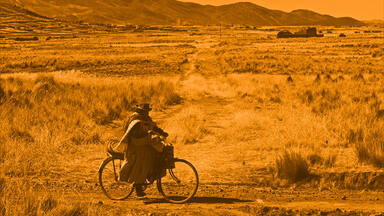Baseline situation
Røros Mining Town and the Circumference is a clear case of a cultural landscape sustained by traditional socio-economic systems. In 2009 there were 21 active farms within the property and a number of redundant farms were still contributing to the preservation of the site’s cultural landscape. However, the agriculture found inside the property was considered to be more and more marginal – traditional summer grazing farms were falling into disuse and permanent closure was affecting the most marginal areas due to different domestic and international agricultural policies. This development was seen as having major consequences for the Røros Mining Town and the Circumference cultural landscape, as well as an important cause of depopulation.
What did they do?
A combination of national and local policies, funding and support schemes, together with the efforts of very proactive and united local stakeholders and civic community, worked to promote traditional small farming and locally made products, with an shared innovative vision and strategy that included tourism as a key component.
Strategic priorities
- Increase profitability of small farming units and add value to traditional products and assets.
- Promote ecological farming methods.
- Support the traditional mowing of uncultivated meadows.
- Develop local niche, high quality products from traditional agriculture.
- Facilitate the maintenance of the cultural landscape of the site and stop depopulation.
- Create tourism products directly connected with local assets and identity.
What worked?
- Inside the buffer zone, government funding supported the traditional mowing of uncultivated meadows in the Sølendet nature reserve.
- Domestic agricultural policies affecting the site rewarded production of local, high-quality niche products and ecological farming methods.
- Farmers were very active, using traditional key raw materials (Røros cattle or Sami reindeer husbandry) to develop first-class, local specialties.
- Some producers innovated with traditional recipes and combining traditional based designs with fresh packages appealing to a younger audience.
- Small farmers made use of old collaborative networks – with deep roots in the area since 1800 – to achieve their new objectives.
- Producers made efforts to coordinate a solid tourism offer that gave tourists the chance to live a mountain farming experience, at least during the summer season.
What was tough?
Being mainly small, local producers, some key activities – such as development, financing, marketing and distribution of their products – were key challenges.
How did they get buy-in?
The strong and historically well-established cooperation spirit of local society and producers made the creation of cooperatives possible. These allowed farmers to leave distribution and marketing efforts to their cooperative representatives. Positive government policies and innovation support helped to finance projects, enhance initiatives, and promote and distribute where the cooperatives failed. Existing organizations, such as the Coop Norge (approx. 900 supermarkets run by 215 cooperatives in Norway) or tourism companies such as Rica Hotels (80 hotels between Norway and Sweden), were supportive of small local food producers, distributing and serving regional and organic products.
What are the results?
Locally made food has become a badge of honour. It created a successful niche food industry, both in the local and regional market, and strengthened Røros’ brand. Local food gastronomy has become a key part of the Røros tourism experience. Rørosmat, a cooperative of over 20 active local food producers, has been created. It helps small-scale farmers to market their products, offering clients a wide and integrated portfolio of high-quality regional food products. Local Food Safaris in the Røros region promoted by Destination Røros DMO and publicized in the official Røros Tourism Guide 2014, offers guided tours of the region’s small farms several times per month during summer months. Tourists can buy tickets online and through the tourist information office.
What lessons can others take from this?
The case of Røros is an example of key stakeholders understanding the fragile link between traditional economic systems and their historical landscape. It shows how effective it can be when the local community takes advantage of established networks to achieve renewed objectives, as well as the importance of appropriate policies, frameworks, and funding support.
It is also proof of how, by mixing a region’s unique traditional raw materials and identity with innovation, it is possible to create new high-quality products, economic opportunities, and tourism experiences that support traditional, local economic systems, identity, and welfare.
Finally, it shows the potential of developing outstanding and inclusive tourism products using the local assets and unique features that already exist.
